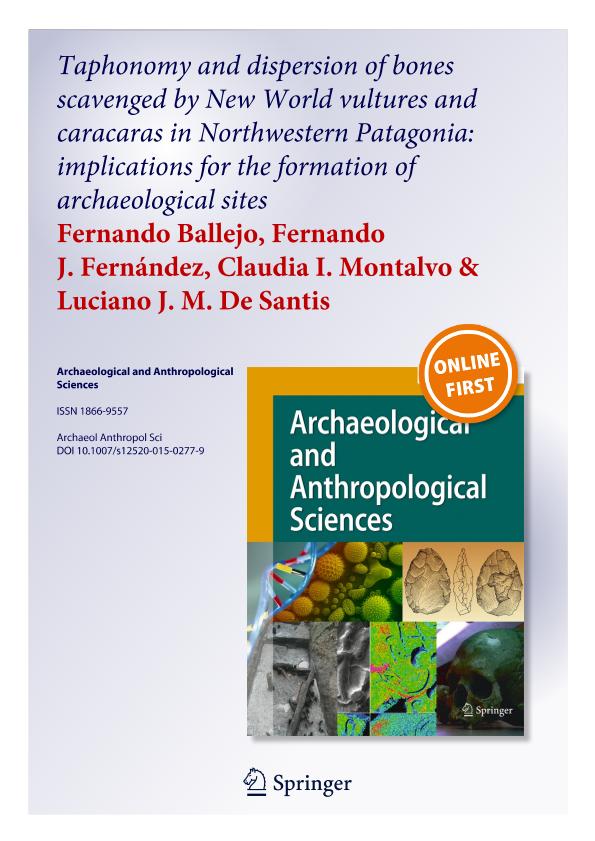Artículo
Taphonomy and dispersion of bones scavenged by New World vultures and caracaras in Northwestern Patagonia: implications for the formation of archaeological sites
Fecha de publicación:
06/2016
Editorial:
Springer
Revista:
Archaeological and Anthropological Sciences
ISSN:
1866-9557
e-ISSN:
1866-9565
Idioma:
Inglés
Tipo de recurso:
Artículo publicado
Clasificación temática:
Resumen
Scavenger birds can feed on large- to small-sized vertebrates and may contribute in the formation of archaeological sites. To evaluate the modifications and dispersal patterns of bones produced by New World vulture and caracara from Northwestern Patagonia, samples of adult sheep, young sheep, and hare carcasses were offered and subsequently analyzed. New World vultures and caracaras quickly fed on the samples. Taphonomic and bone dispersal patterns suggest two types of accumulations: (1) open-air sites with large and medium-sized vertebrates represented by complete, fractured, scratched, notched, and punctured elements and (2) rock shelter or cave sites dominated by small vertebrates represented by broken, corroded, fractured, and digested elements.
Palabras clave:
Bone Dispersal
,
Carcass
,
Northwestern Patagonia
,
Scavenger Birds
,
Taphonomy
Archivos asociados
Licencia
Identificadores
Colecciones
Articulos(CCT - LA PLATA)
Articulos de CTRO.CIENTIFICO TECNOL.CONICET - LA PLATA
Articulos de CTRO.CIENTIFICO TECNOL.CONICET - LA PLATA
Citación
Ballejo, Fernando; Fernández, Fernando Julián; Montalvo, Claudia Inés; De Santis, Luciano J. M.; Taphonomy and dispersion of bones scavenged by New World vultures and caracaras in Northwestern Patagonia: implications for the formation of archaeological sites; Springer; Archaeological and Anthropological Sciences; 8; 2; 6-2016; 305-315
Compartir
Altmétricas




